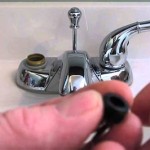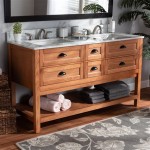How to Add a New Bathroom: Essential Aspects to Consider
Creating a new bathroom in your home involves a series of important considerations that impact its functionality, aesthetics, and overall success. Understanding these fundamental aspects is critical to ensuring a seamless and satisfactory bathroom addition.
In this article, we explore the key elements to consider when adding a new bathroom, providing guidance on essential aspects such as planning, design, materials, fixtures, and budgeting. By addressing these crucial factors, homeowners can create a beautiful and functional bathroom that enhances the value and enjoyment of their home.
1. Planning and Design
Careful planning is paramount in creating a new bathroom that meets your needs and fits harmoniously within your existing space. Consider factors such as the location of the bathroom, its intended use, and the traffic flow to ensure optimal functionality.
The design phase involves selecting the bathroom's layout, fixtures, and materials. Determine the placement of the toilet, sink, shower, and tub, taking into account the space's dimensions and the accessibility of each fixture.
2. Materials Selection
Choosing the right materials is essential for both the durability and aesthetics of your new bathroom. Consider factors such as water resistance, slip resistance, and overall quality when selecting flooring, countertops, and fixtures.
For flooring, options include ceramic or porcelain tile, vinyl flooring, or natural stone. Countertops can be made from materials such as granite, quartz, or marble. Fixtures should be durable, easy to clean, and complement the overall design.
3. Fixtures and Lighting
Fixtures play a crucial role in the functionality and style of your bathroom. Select fixtures that are both efficient and aesthetically pleasing. Consider the size, shape, and style of the sink, toilet, shower, and tub to ensure they fit well within the space.
Lighting is crucial for creating the desired ambiance and functionality. Include both natural and artificial lighting sources, and consider the placement of windows, mirrors, and vanity lights to optimize illumination.
4. Ventilation and Plumbing
Proper ventilation is essential for moisture control and air quality. Install a bathroom fan or window to prevent condensation and mold growth. Ensure adequate plumbing by hiring a licensed plumber to run the necessary water lines, drains, and vent pipes.
Consider the placement of pipes and fixtures to minimize noise and ensure optimal water flow. Insulation around pipes can help prevent heat loss and noise transmission.
5. Budgeting
Establishing a realistic budget is crucial for managing the costs associated with adding a new bathroom. Determine the total cost, including materials, labor, permits, and any additional expenses.
Consider hiring a contractor to assist with budgeting and overseeing the project. Obtain multiple quotes from contractors to ensure competitive pricing.
Conclusion
Adding a new bathroom to your home requires careful consideration of essential aspects, including planning, design, materials, fixtures, ventilation, plumbing, and budgeting. By addressing these key elements, homeowners can create a functional, aesthetically pleasing, and value-enhancing addition to their property.

Adding A Bathroom To Your Home Where Start In 2024 Badeloft

Cost To Add A Bathroom 2024 Guide Forbes Home

How Difficult Is It To Put In A New Bathroom Victoriaplum Com

How To Add Another Bathroom Your House Archiscene

Why Add A New Bathroom To Your Home

How To Add A New Bathroom In Your Existing Home Lenore Frances Interiors

Bathroom Remodeling A Step By Guide Budget Dumpster

How To Add A Bathroom Anywhere In Your Home Zoeller Pump Company Wastewater Pumps Systems

4 Ways To Add Character A New Room

How To Install A Bathroom Vanity
Related Posts






